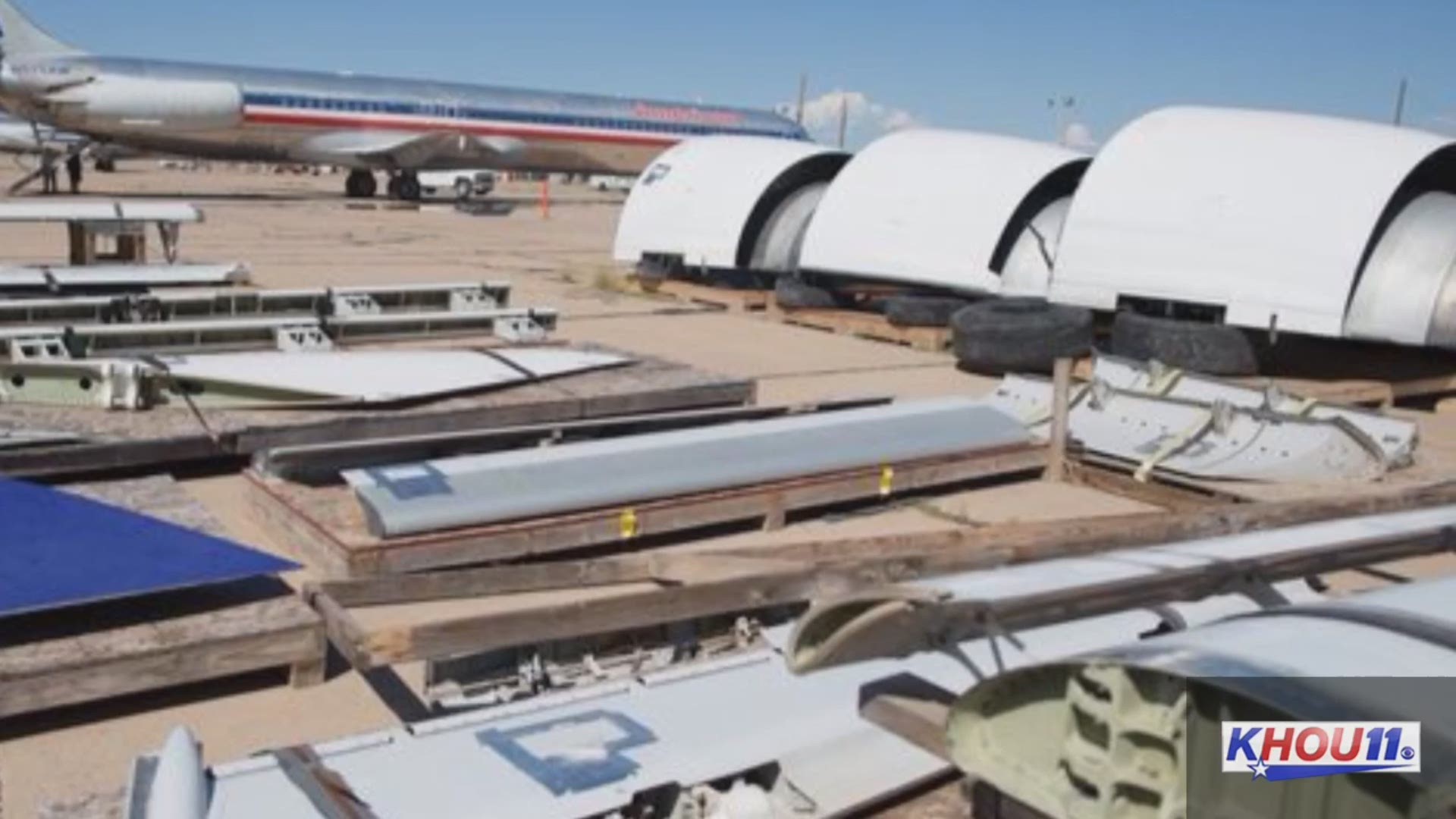ROSWELL, N.M. –American Airlines Flight 9780 arrives from Dallas/Fort Worth and taxis past a line of other MD-80 passenger jets as the morning sun rises over the New Mexico desert on a chilly morning this past winter.
But as the jet comes to a stop, there’s no boarding gate or jet bridge. In fact, there are no paying passengers aboard at all.
The pilots leave the cockpit and head toward the rear of the plane. They drop the rear stairs from the 140-seat MD-80’s rear emergency exit, and the flight’s four occupants – two pilots, an American employee and a journalist – calmly descend the steps into the New Mexico sun.
Lines of planes stretch for nearly as far as the eye can see. Many bear familiar logos. Most planes are intact – but not all of them. Reams of airplane parts lay strewn nearby across the desert floor.
“They affectionately call this the boneyard,” says Martin Testorff, one of American’s aircraft storage managers based here.
The “boneyard” is the colloquial term given to aircraft storage facilities where out-of-use planes are sent to be sold, stored or scrapped. Most are in arid locations such as California or Arizona. The one here in New Mexico – officially the Roswell International Air Center – is the preferred facility for American.
The Center’s sprawling grounds sit adjacent to Roswell’s tiny airport terminal, where American is the only carrier currently offering regular scheduled passenger flights – three per day to Dallas/Fort Worth.
But it’s the flow of older, retiring jets that are the real lifeblood of the Roswell International Air Center.
Planes can sit indefinitely in storage here, where the dry desert air helps keep the idle aircraft from corroding. Some find second lives, taken in by cargo carriers or by smaller airlines in the developing world. Others face a stark end – raided for parts or scrapped altogether.
Whatever fate awaits, Testorff says, “We take good care of our airplanes out here.”
American isn’t the only carrier to retire its planes to Roswell, one of about a half-dozen such facilities in the United States. Several Boeing 777s from Asian discount carrier Scoot are visible during one recent visit. As is an old Thai Airways Airbus A300 and a Boeing 727 with a long-faded paint job.
There are private aircraft, too, including a red 1962 Lockheed JetStar JT 12-5 that once flew Elvis, according to American’s staff at Roswell.
But most of the planes currently on the ground here have come from American. And for good reason: The airline is phasing out its once-vast fleet of MD-80 and Boeing 757 jets, retiring those older models as part of an aggressive fleet-renewal plan.
The retirement of the MD-80 – long the backbone of American’s domestic fleet – has been especially prolific. The carrier once had more than 370 “Super 80s,” as American refers to them, in its fleet. But they’re scheduled to be phased out by 2017, replaced by modern new Boeing and Airbus jets.
The airline has been sending its MD-80s to the Roswell boneyard since 2003, with the rate increasing in the past two years to about one retirement a week.
The stored planes have become especially important for American for as long as the last MD-80s and 757s remain in its active fleet. Both planes have long been out of production, meaning parts can be difficult to track down if maintenance is needed. This makes their idled brethren in Roswell a crucial link to keeping the others flying.
“We store them so we can use the material for the fleet, to keep the fleet flying,” says Paul Bahle, manager of aircraft disposition for American Airlines.
While the MD-80 is the current headliner for American at Roswell, the airline retires other aircraft types here too, including 757s and a few 767s.
Leased planes are returned “and we sell as many as the owned assets as we can. But as you can see, we keep quite a lot of them out here,” Bahle says.
Beyond the business side of the boneyard, there’s plenty of interest in the facility from aviation enthusiasts.
“We get more requests for tours than probably Disneyland,” Testorff says, even though the facility is not open to the public.
“They (people) always want to come see it and experience it for themselves,” adds Bahle. “To see an airline in kind of a different light. They just want to come out and see the planes in different states of disrepair.”
Pat Walsh – the captain on Flight 9780 that brought yet another American MD-80 to "the Boneyard" – has been here previously. Even he’s eager for another look.
“All the airlines that have come and gone over the years,” Walsh says, reminiscing about a previous visit. “Pan Am, TWA and Braniff brought back a lot of memories … those carriers I remember as a kid.”
“And now there are American Airlines airplanes as we’re getting new airplanes and retiring our older ones,” he adds, bringing his visit full circle.

